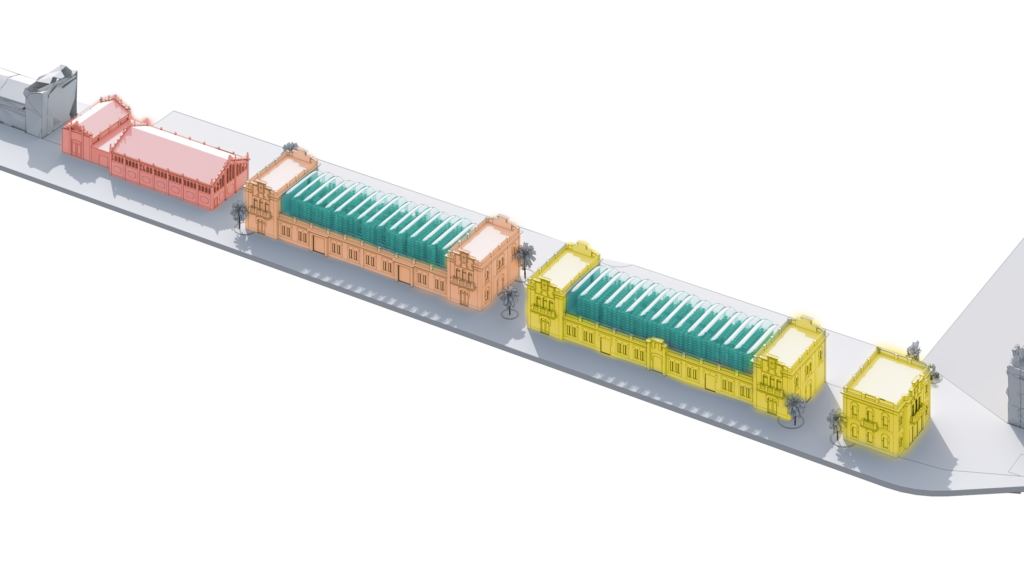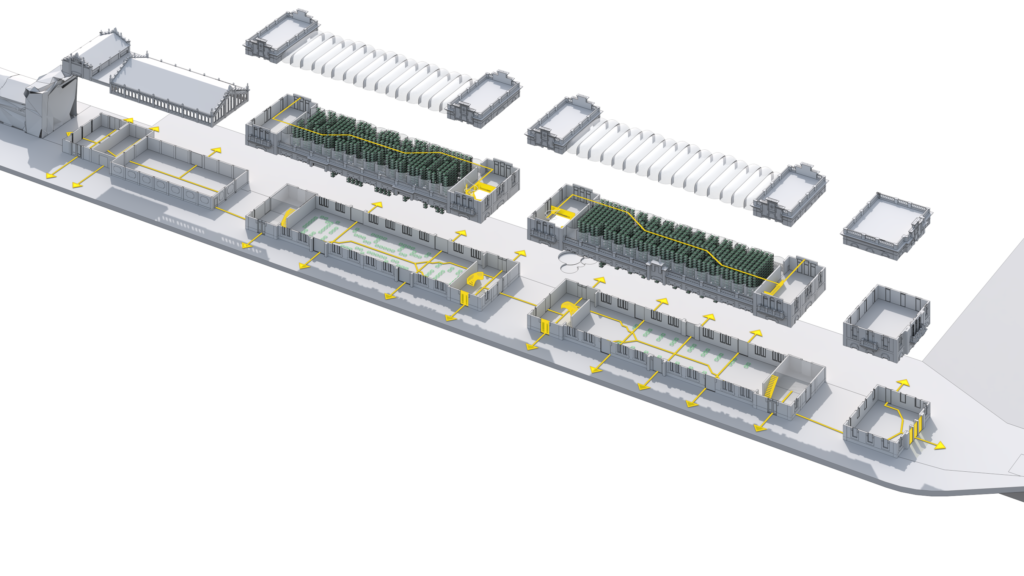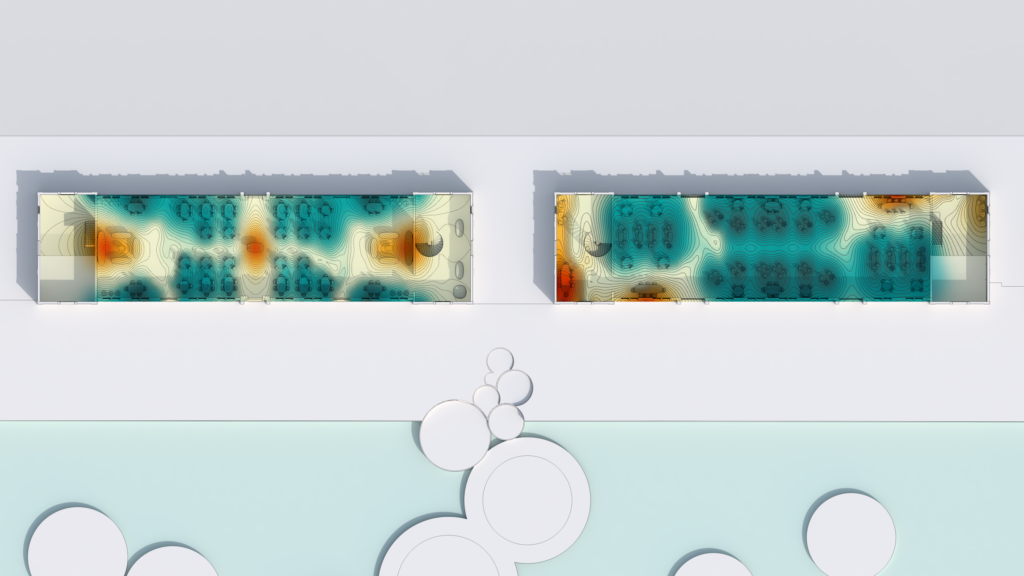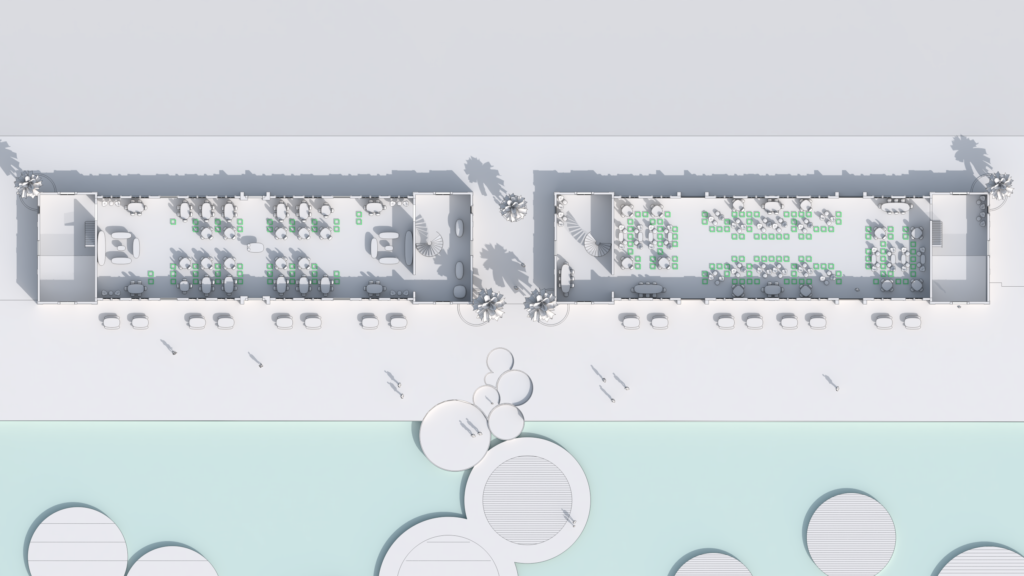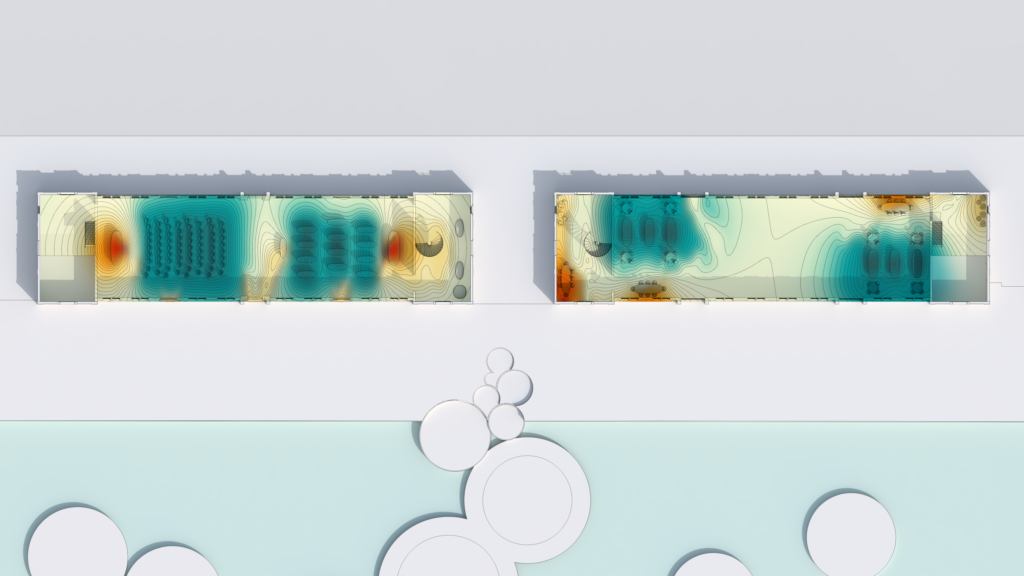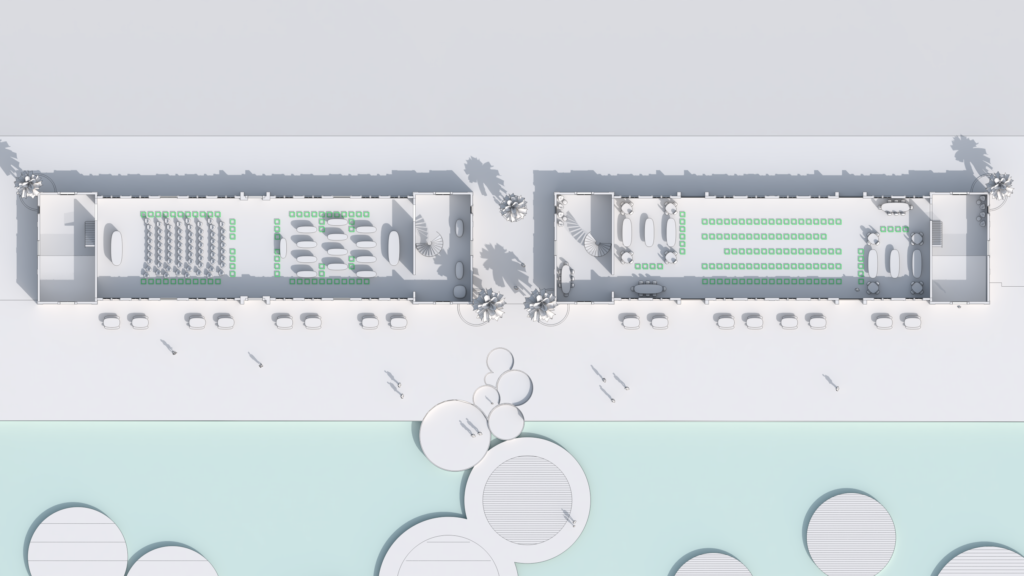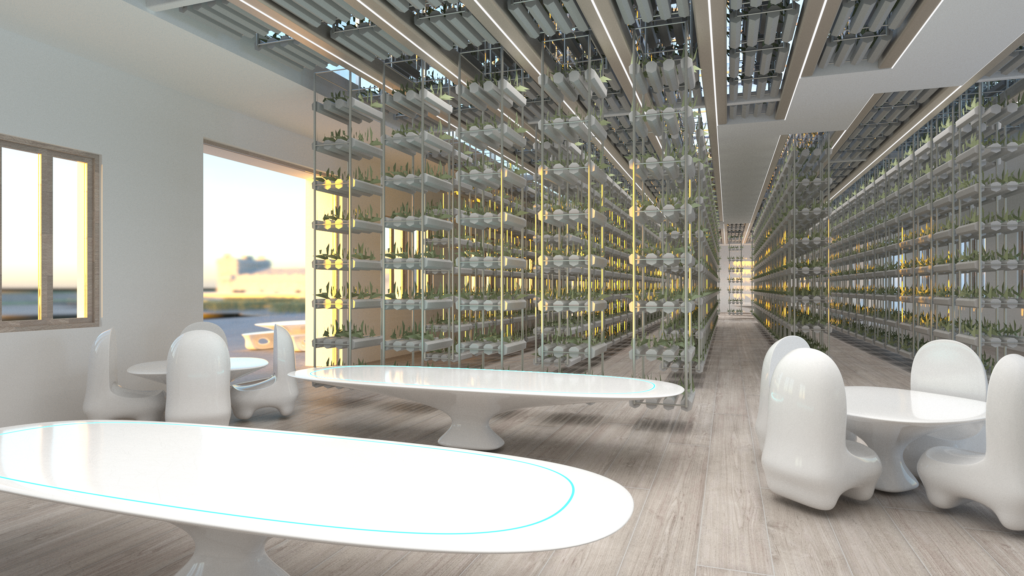Heura 2050
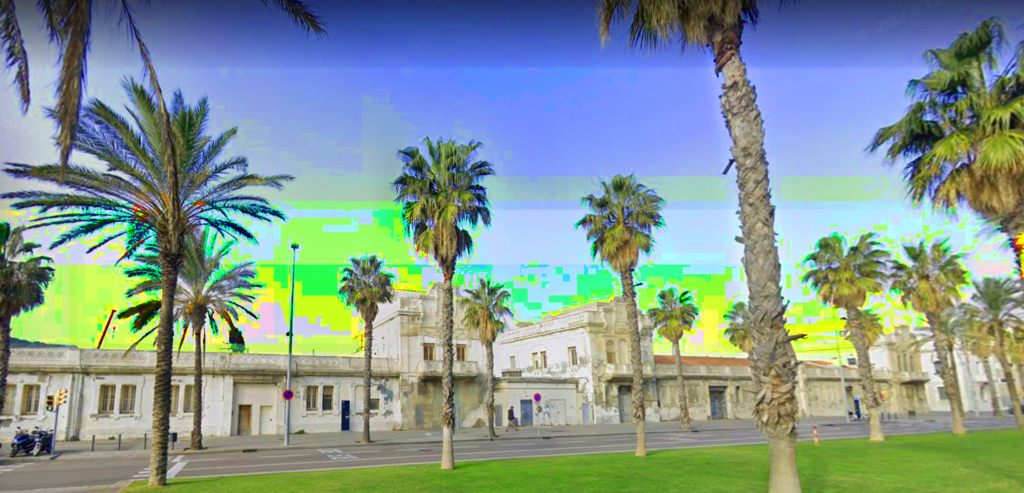
Heura 2050 | Urban
To create a workspace as a farm, we began by designing the farms. When we looked at the existing site we are working on, we decided to relocate the ship repair buildings. The new space would be used to place our urban and floating farms. In addition, we would create a direct path from the street on the north side of the building for industrial and direct pedestrian access. Our goal with the farm is also one of learning and experimenting in ways we can create connections between the community and the site. Therefore, we created a new path of a tour with different stopping points like an introduction point, gathering points, a tasting area, a farmers market, a production zone, and a space for public events like concerts or markets.
Afterwards, we began understanding the growing conditions of our farm. First we did a wind analysis, which showed us the desirable winds coming from the north at a slow and constant speed, and undesirable fast and inconsistent winds from the southwest and north east direction. We used this data to place the taller crops in a way where they shield the smaller crops from the harsh inconsistent winds, while at the same keeping in mind the experience of the farm.
Next, we created meandering paths that encourage leisure, learning, tasting, browsing, and relaxing. Following Barcelona’s goals for biodiversity, and Europe’s goal for natural farming we added a large mass in between the farms with hedges of local flora that would become windbreakers for crops. We also added bird and bat sanctuaries, insect hotels, ladybug hotels to become natural pesticides. Not only would the biodiversity practices provide improvements to the farm, but also would be used to educate the community on the importance of holistic farming.
Finally, after our climate and crop analysis, we placed greenhouses around crops that need a controlled environment to grow in catalunya. These would be crops that would be experimented with on our farm and allow those in the community to further understand how different climates affect the farming process.
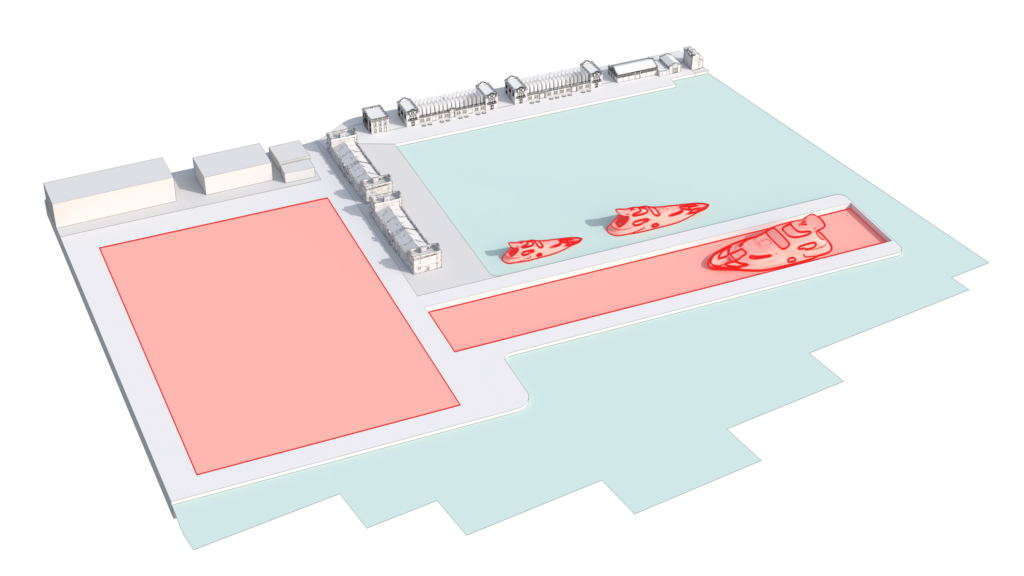
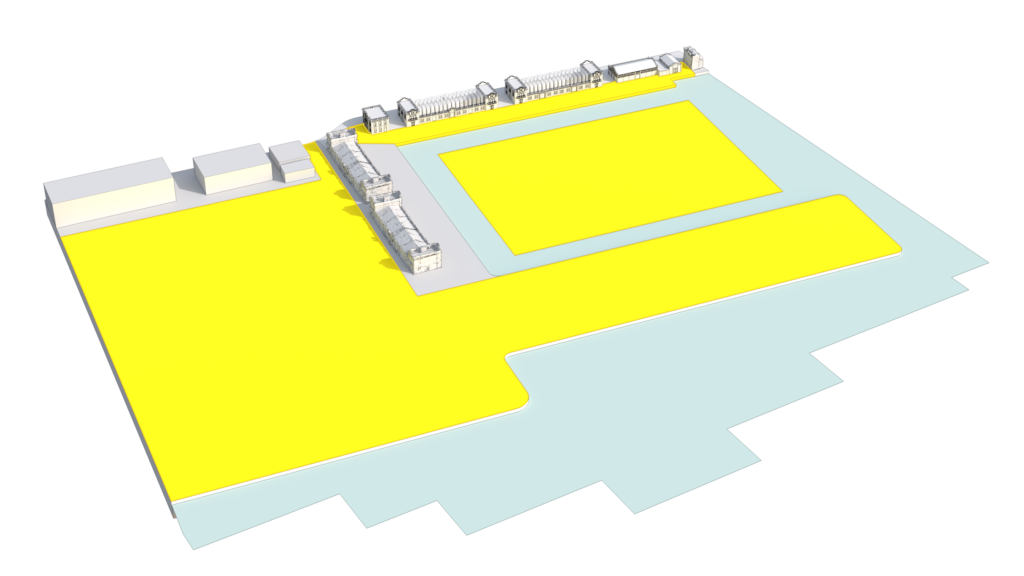
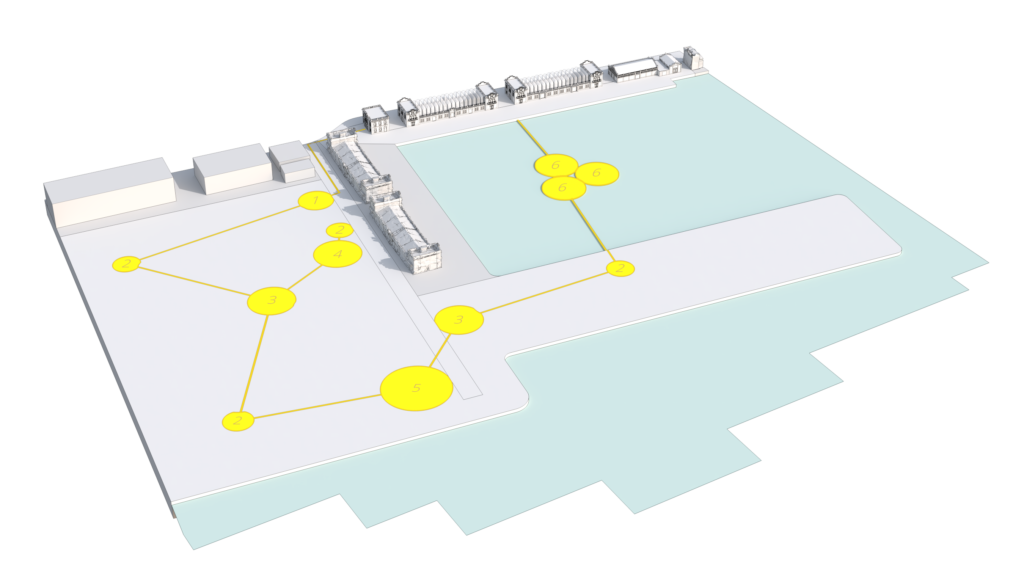
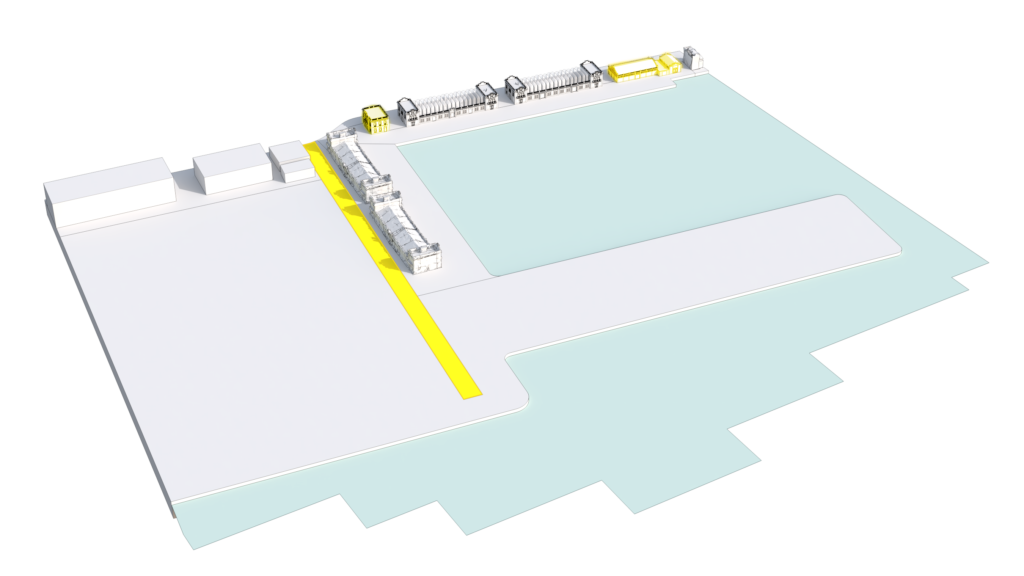
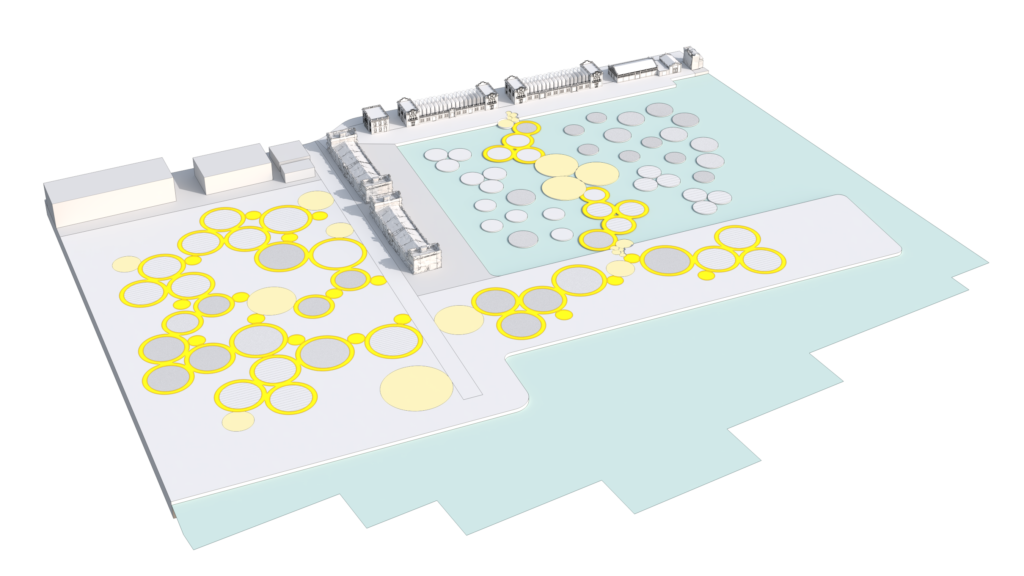
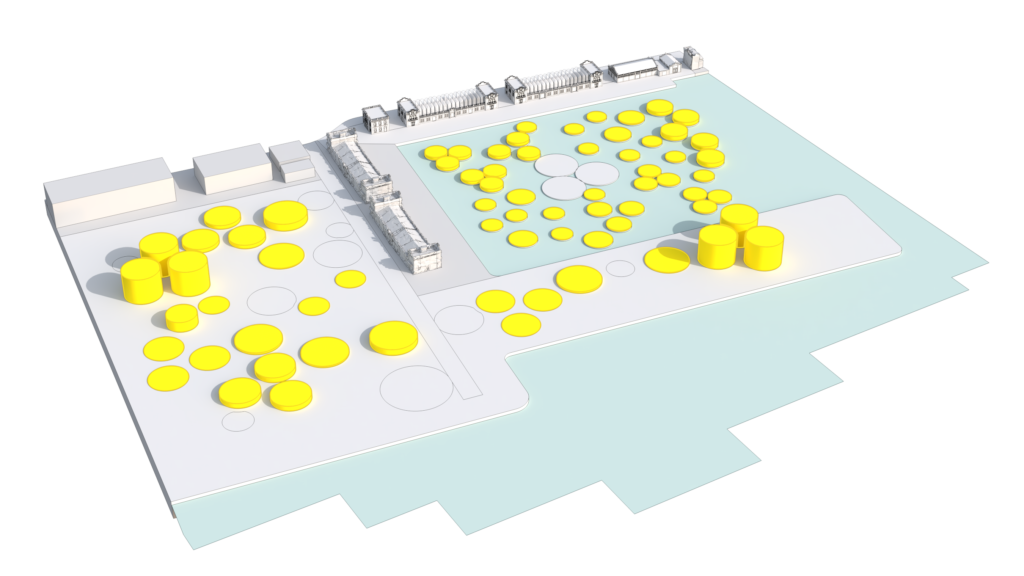
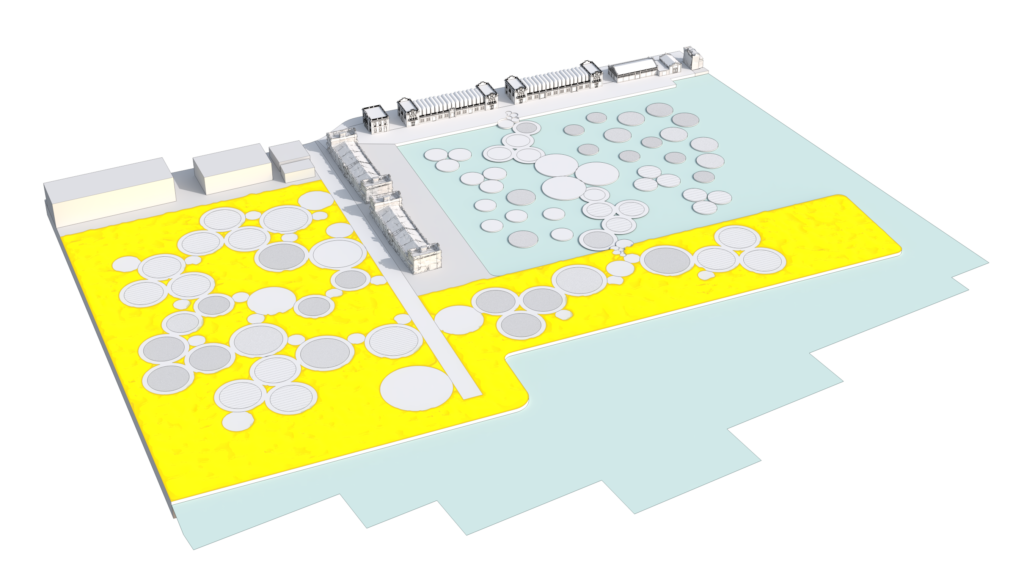
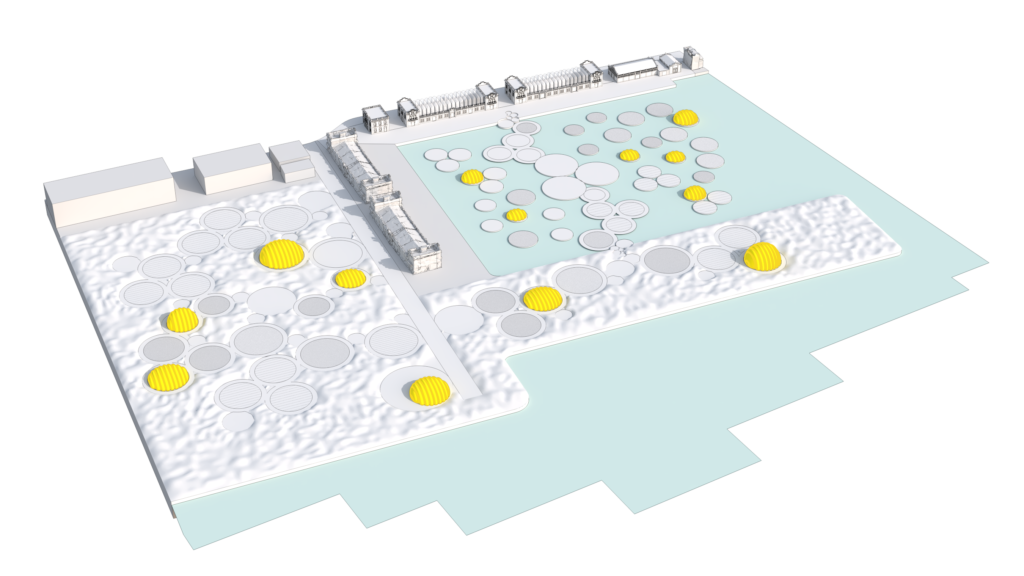
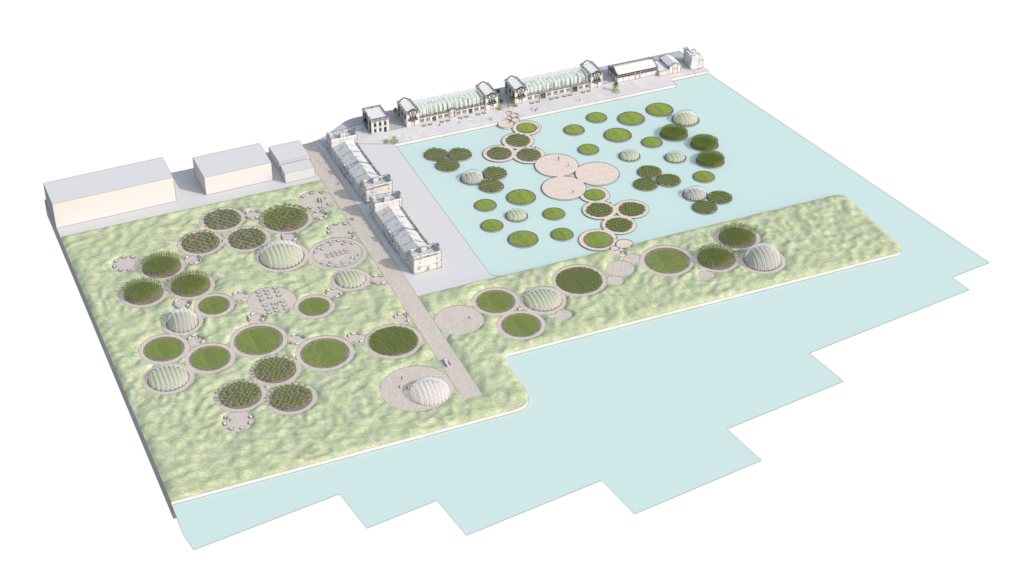
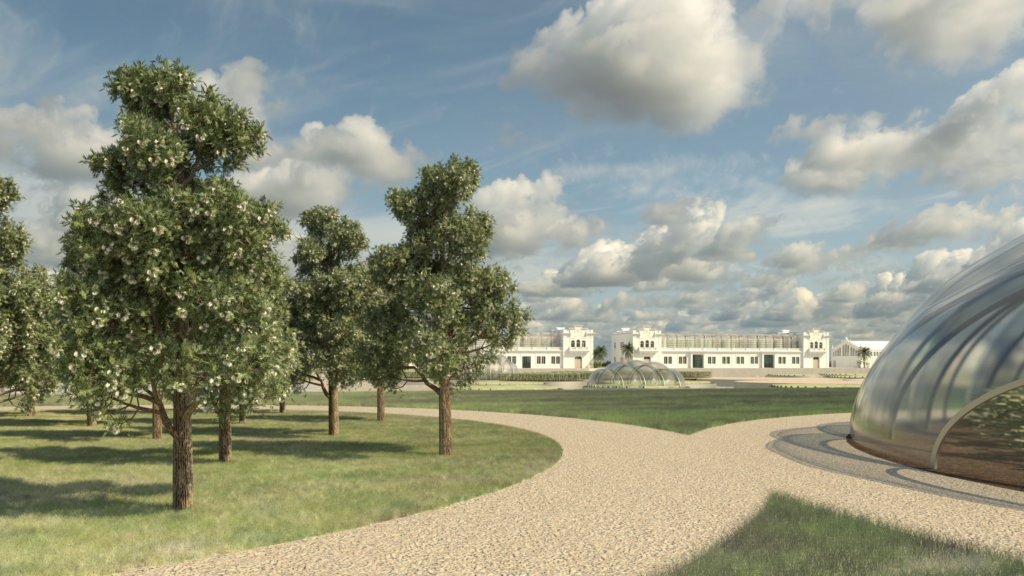
Heura 2050 | Architecture
For our architectural layer, we began with an abstract exploration with how a workspace as a farm would look like. This was done by distorting an image and letting our subconscious run free.
Next, we carefully removed connections between the structures that were not adding any value to the historic building in order to create a stronger connection with the water. Afterwards, we studied the rhythm of the existing building so that our addition on the top of the building would work in harmony with the historic building. Next, we softened the rhythm massing, and added ribs made of ETFE to create a light and transparent addition to the existing building. We chose this approach to have a bold difference between the old and the new while at the same time highlighting the importance of the historic building.
For our addition, it was crucial for us to understand the wind direction so we could harness the wind for cross ventilation which would cool our space and improve the health of our interior farms. We created openings at an angle facing the slow constant wind. Next, we did a radiation study on the architectural addition to understand the points with the highest solar radiation. At these points we placed opaque photovoltaic panels to create shading and harness energy.
Next, we brought the farms indoors. We created a grid of moving vertical farms that could be operated to best serve interior spaces.
Finally, through the lights of the vertical farms, we imagine light shows that would attract the community to explore our building.
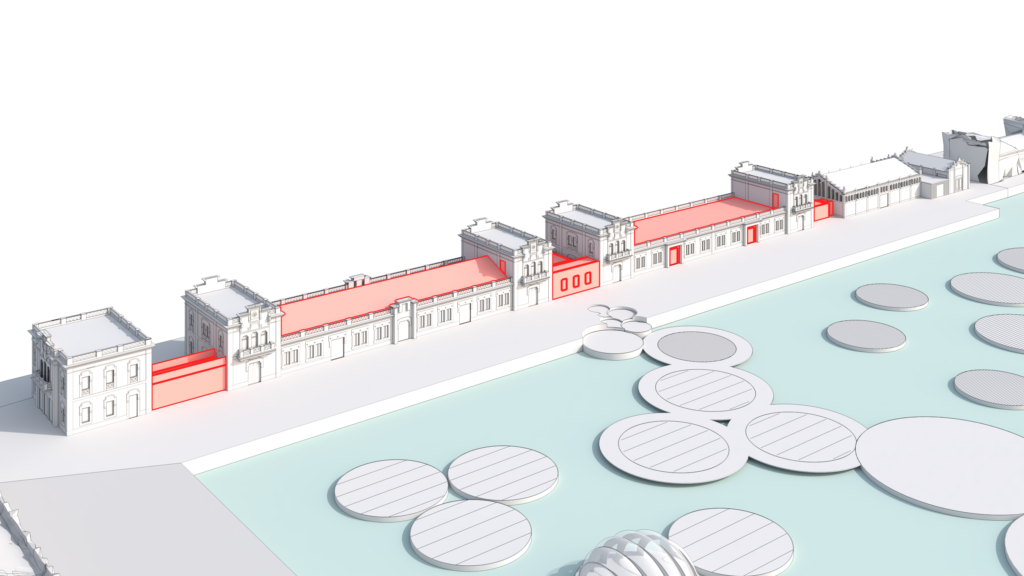
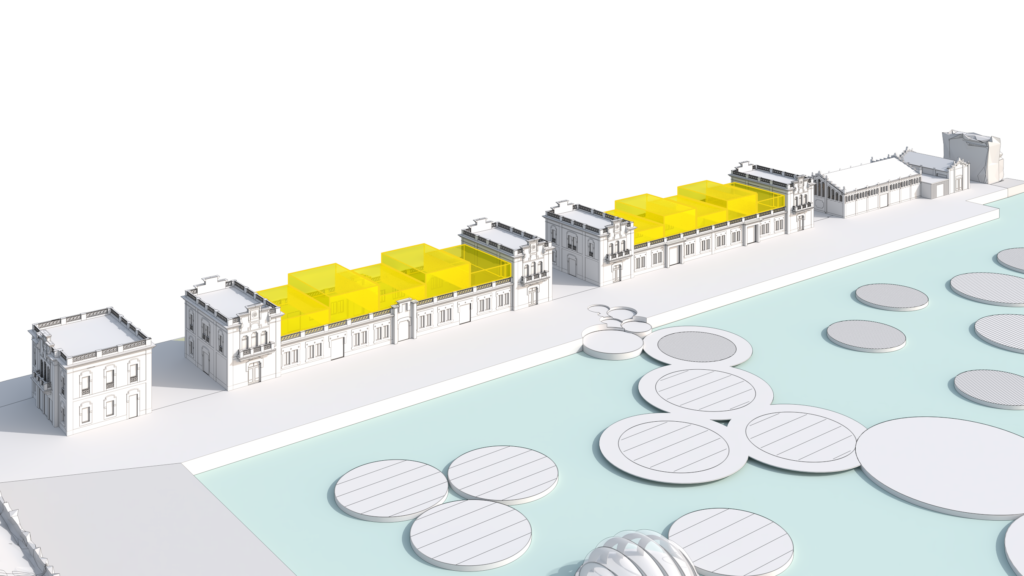
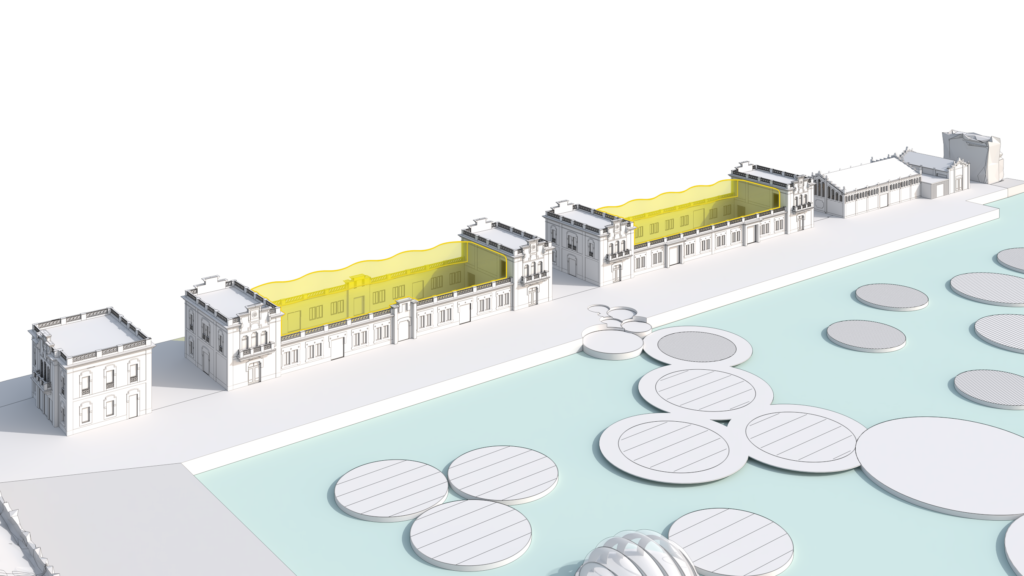
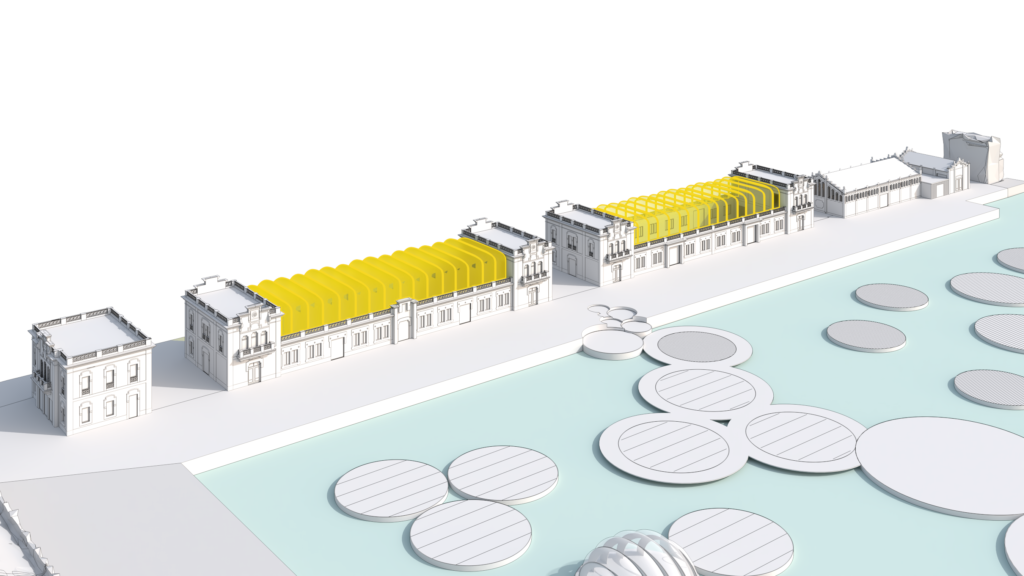
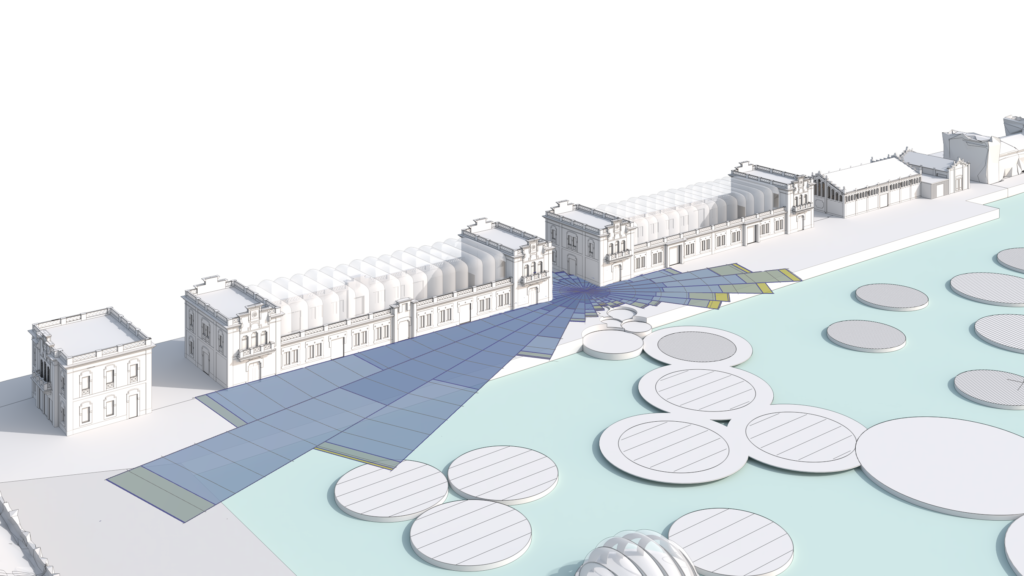
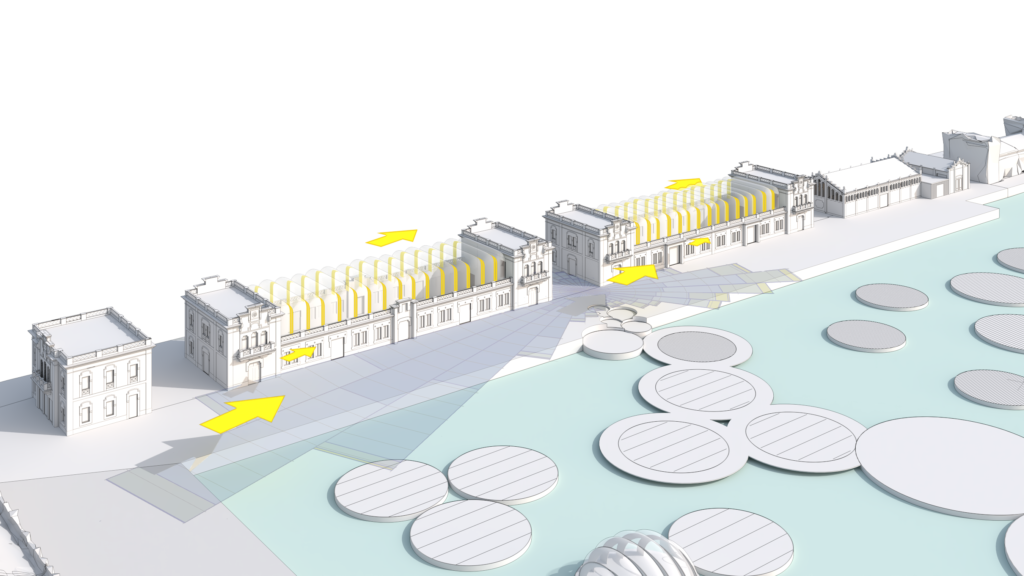
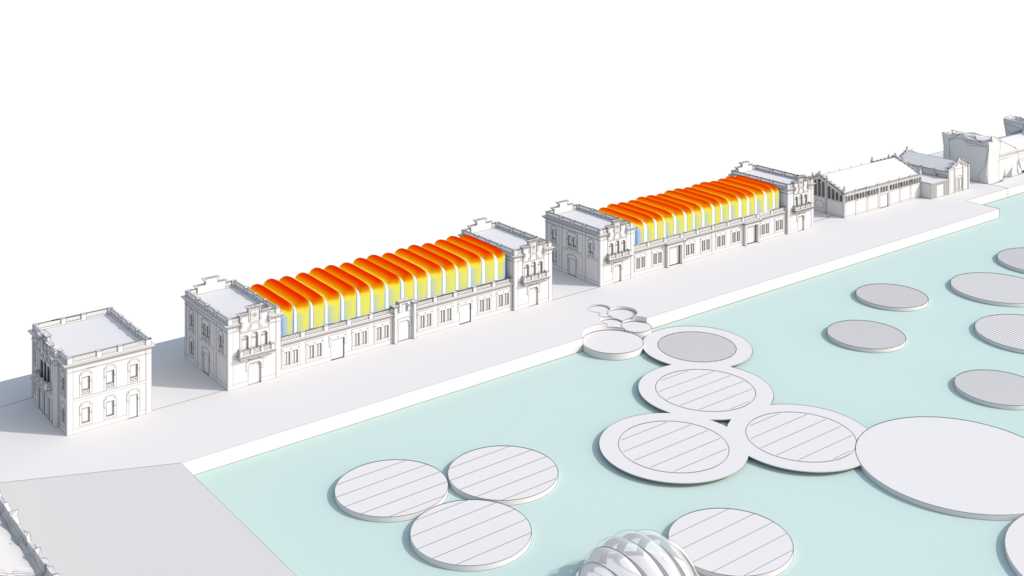
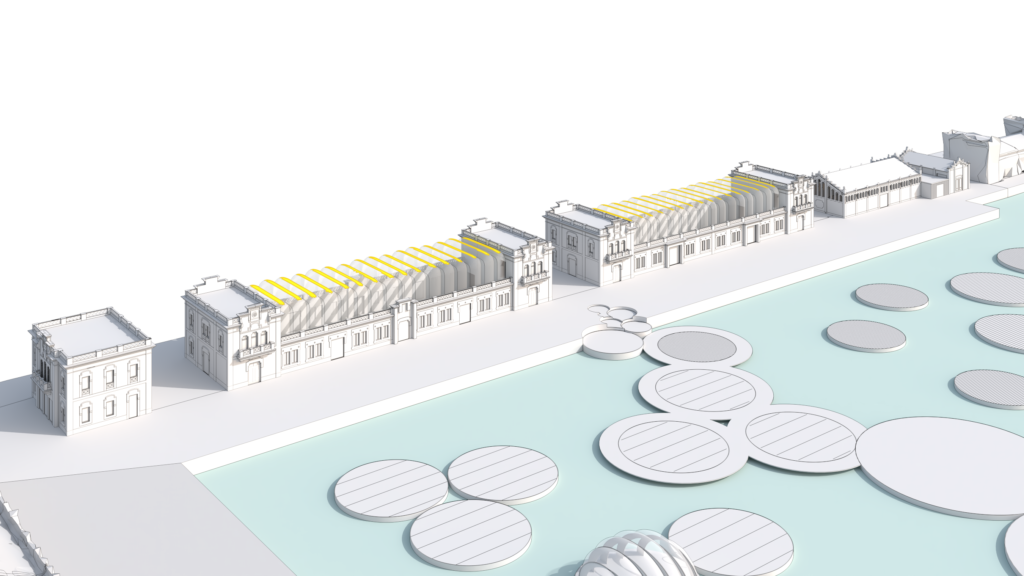
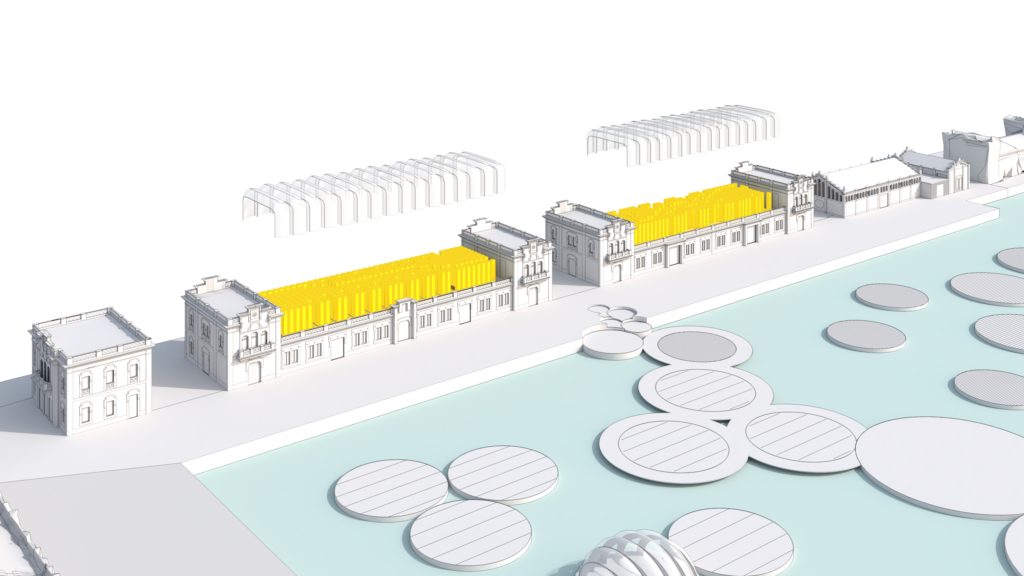
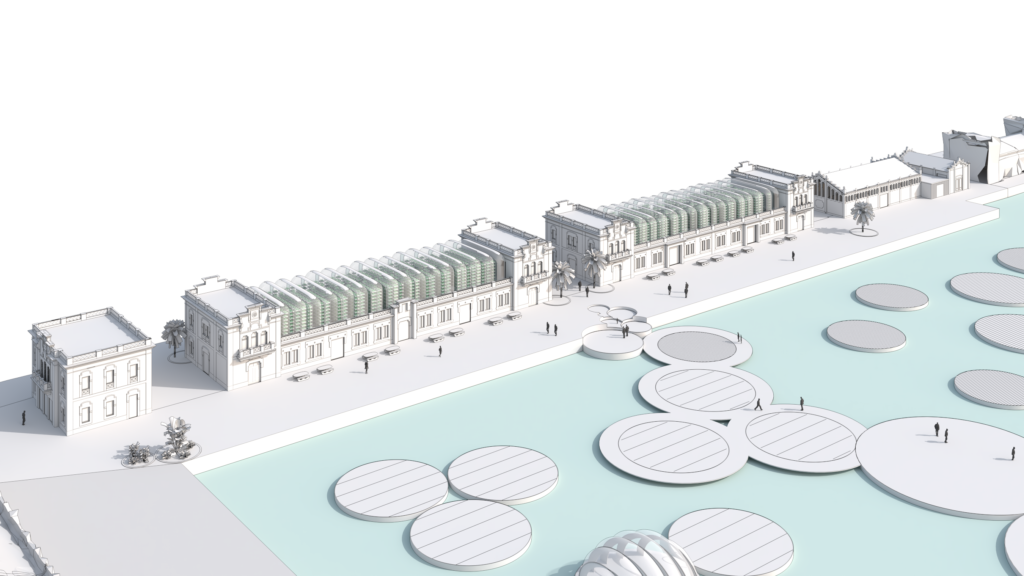
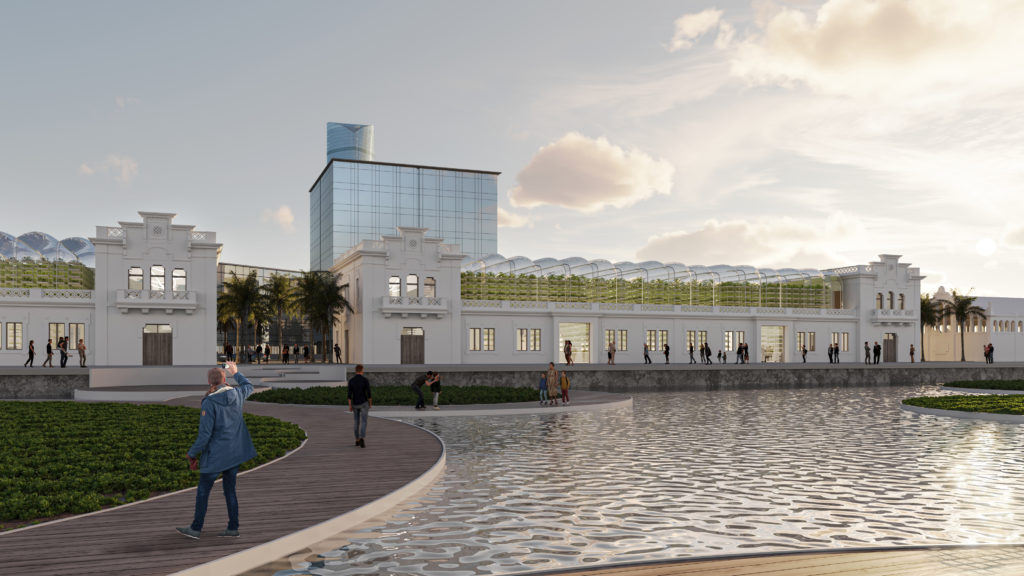
Heura 2050 | Interior
For our workspace as a farm, we began by programming the building. On the north side, we added a welcome center as an information center and a meeting point to begin tours. As we move south, we would find the dining building where the community would be welcome to dine, take workshops, classes on cooking, and public events. Next, we have the workspace building where we would have workers come to the space to work, learn, and research. Finally all the way in the end, and closer to the water connection to the city – we would have our production buildings that would transport fresh produce from the farms and food from the dining hall to the city. We can see with the movement arrows the ways to move through and across the buildings.
Through understanding this movement, we created a map to differentiate low mobility spaces and high mobility spaces. We divided the low mobility spaces between individual and interactive zones. Using this strategy for the workspaces, we created focus zones, flex zones, meeting zones, and leisure zones. For the dining spaces we created slow dining, quick dining, and kitchen spaces. We also created another iteration of how the spaces would be transformed using the idea of transformable spaces. The dining spaces could become lecture spaces or hands on workshop spaces. In addition with the help of vertical farms that could move down to create partitions, they could be used to further divide spaces and create privacy and workspaces could become research spaces.
Finally in 2050, we envision new technologies significantly affecting the space we work in. First we imagined interactive chips for customizing food choices to peoples body needs, and for access into different parts of the building. We imagined accessible 3D printed food that would be used for mass fast food production that could be picked up from our site or shipped to the city, and finally using plant filament for packaging to prevent food waste.
As mentioned prior, we imagine spaces of the future being transformable through AI, lightweight furniture, and the allocation of vertical farms in the space. We see transforming spaces as a way of improving the quality of relationships that can occur in our building.
We see vertical farms in our space as more than just farms but also as ways to improve mood, air quality, acoustics, research, and the selling of products. We imagine pushing these vertical farms further and using them as vending machines so people can buy products to take them home, or for research to carefully study plants.
This research could be done with AR lenses, where people could visualize data, content creation, and for interactive meetings.
Finally we believe that through the expansion of Q-LEDs we imagine having sunlight mimicking in the building to improve mood, prevent seasonal depression, and to not disrupt circadian rhythms. Alongside sunlight mimicking, we imagine implementing the strategy 22@ uses for ocean cooling into our building to further work alongside the environment.
